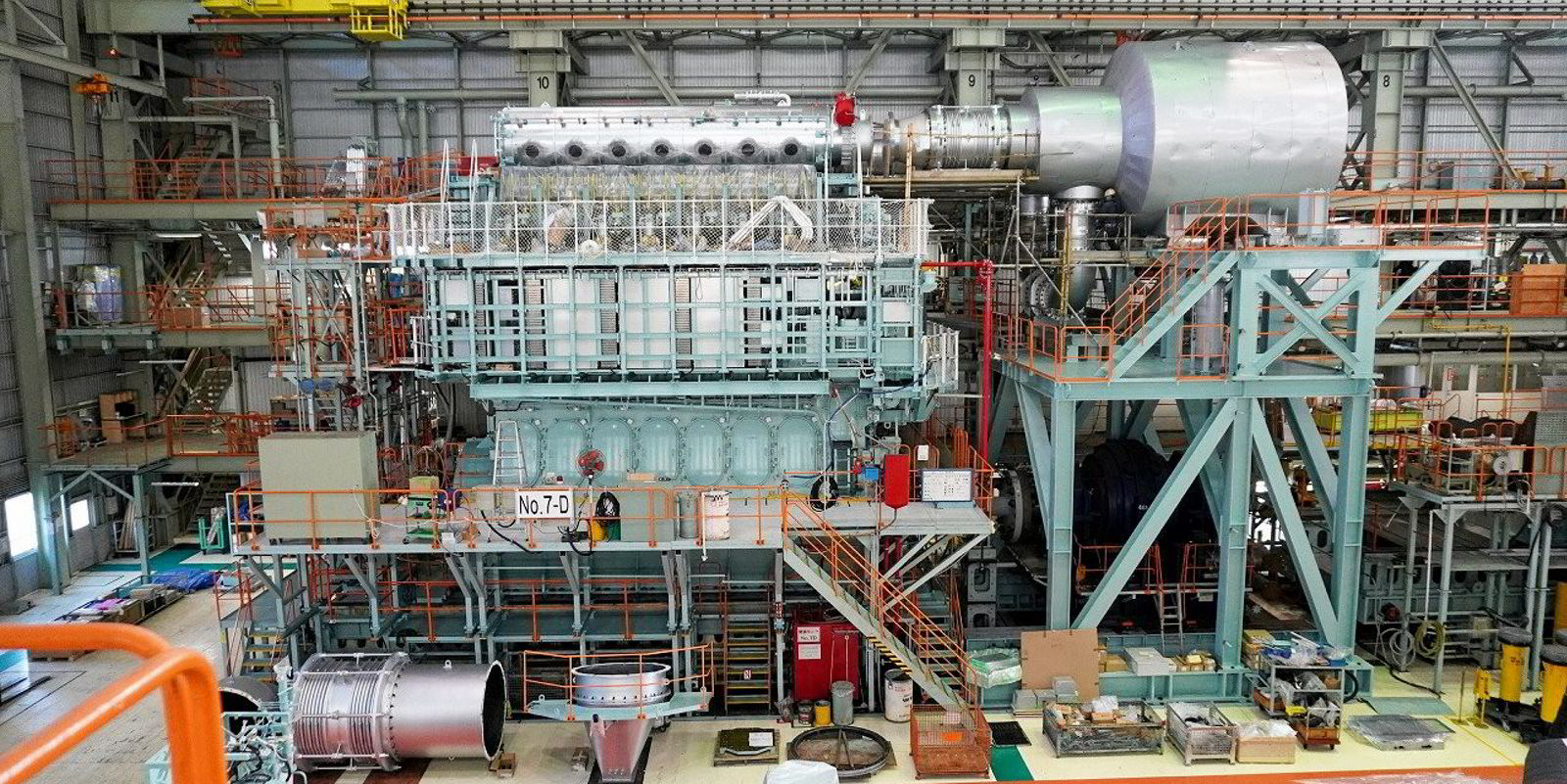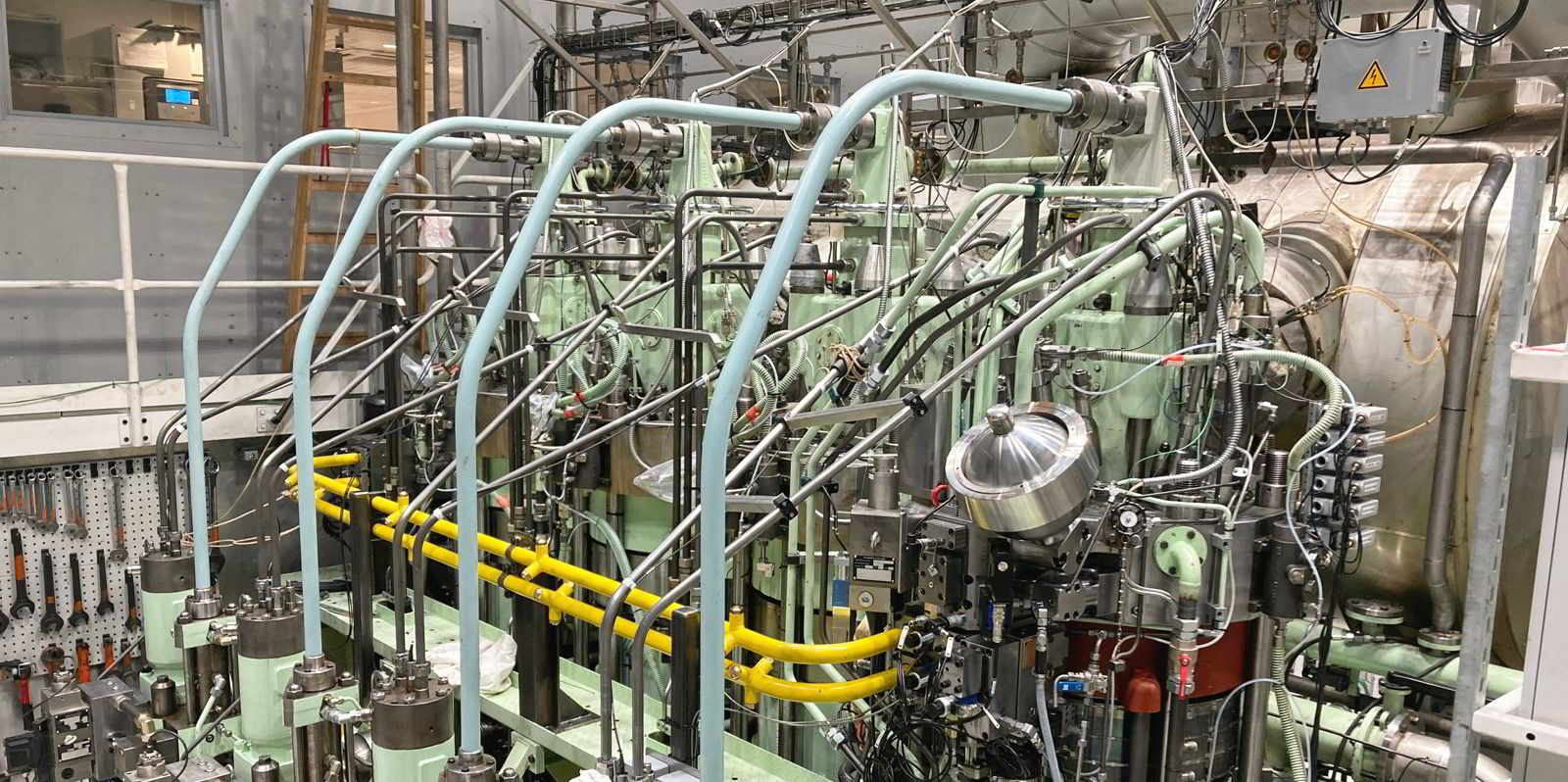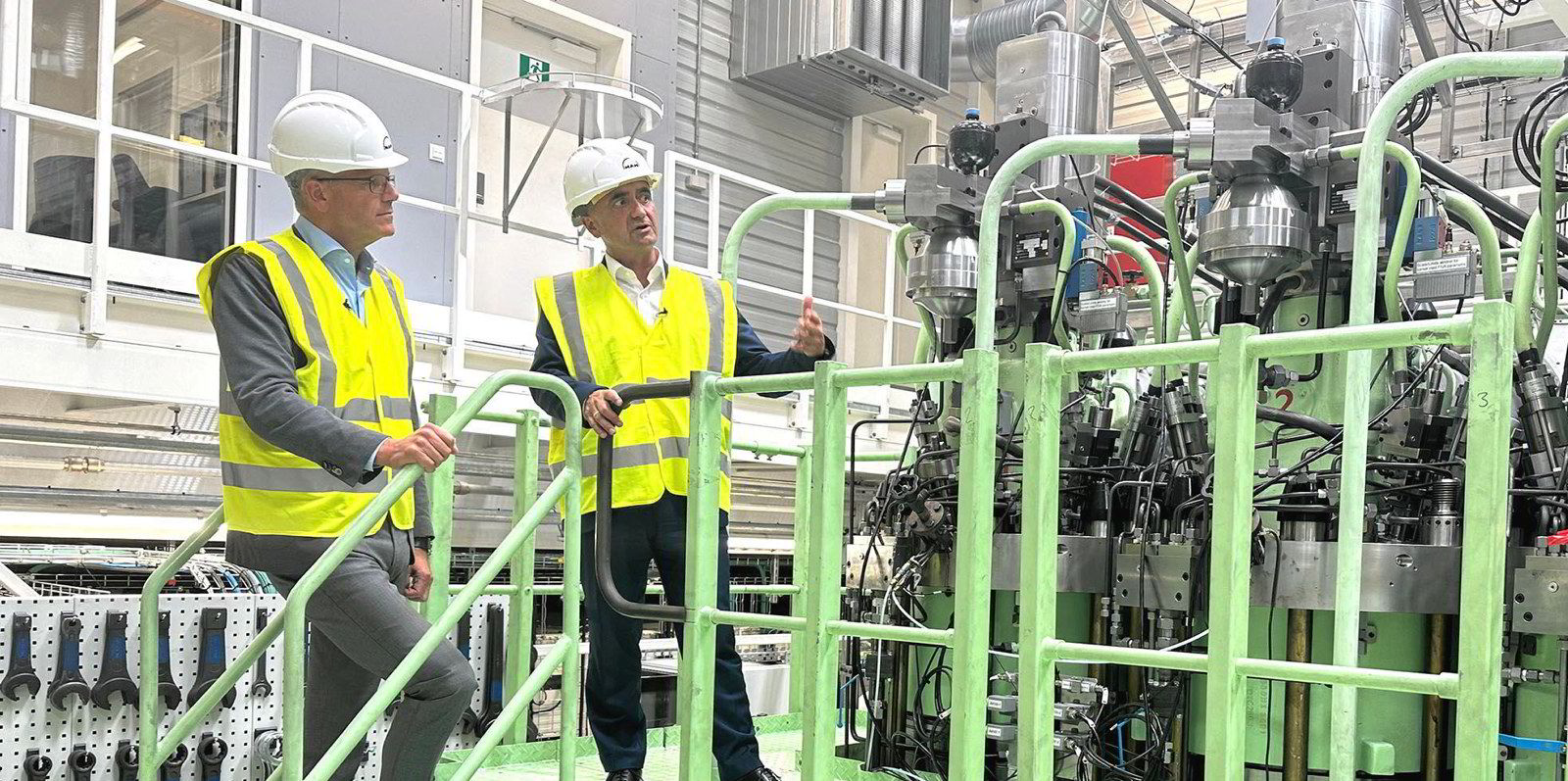One of the world’s first ammonia engines, currently under construction, is expected to start full-scale tests running on the fuel in July in preparation for its delivery to the shipyard at the end of 2024.
In a webinar, MAN Energy Solutions head of two-stroke promotion Rasmus Bidstrup said Mitsui & Co — a Japanese licensee for the engine maker — is “almost done” with the assembly of the seven-cylinder, dual-fuel engine.
He revealed that the target is to start operating it on diesel in May before moving it to run on ammonia in July.
Bidstrup said the aim is to deliver the engine by the end of 2024.
“We will have some of the world’s first ammonia-powered — from our design — vessels going into operation from 2026 onwards,” he said.
Earlier in April, MAN ES announced that Japanese shipowners K Line and NS United, along with trading house Itochu Corp, will own one of the first vessels to be fitted with its MAN B&W 7S60ME-ammonia engine.
This will be installed on a 200,000-dwt bulk carrier being built at Imabari Shipbuilding for a joint venture of the three companies.
Bidstrup said that once MAN ES has obtained positive service experience from the 30 to 35 pilot ammonia engine projects it has in the pipeline, the company will introduce a wide portfolio of ammonia engines. But he said the exact timing will depend on shipyard schedules.
“We believe it will be some time from in end of 2026,” he said, listing five different ammonia dual-fuel engine types that the company expects to offer.
“We actually expect a very fast uptake of ammonia once we have the proven service experience of ammonia as a marine fuel,” he added.
Bidstrup highlighted four challenges for the combustion of ammonia in dual-fuel engines.
Among these, he listed the potential for emissions of nitrous oxide — more commonly referred to as laughing gas. Such emissions are almost 300 more potent as a greenhouse gas than those of CO2.
He also mentioned combustion slip, which in the case of ammonia would be a toxic emission; the auto-ignition temperature of the fuel, which is around 650C compared to 250C for fuel oil; and ammonia’s combustion speed, which is some 11 times slower than that of fuel oil.

Bidstrup said MAN ES has conducted nine months of tests with ammonia on its test engine, which is currently running on one cylinder, in Copenhagen.
He said it was originally expected that a large amount of fuel oil as pilot oil would be required but revealed that the test engine has achieved 5% pilot oil consumption.
The two-stroke manager also said that laughing gas emissions are “extremely low” in MAN ES’s tests and can be managed by controlling the combustion injection timing, temperature and pressure.
He said MAN ES has already reduced the combustion slip by 70% since July and the target is to cut it by 15% more.
“Ammonia is a very good fuel. Ammonia results in very very stable combustion,” Bidstrup said.
MAN ES has said that by the end of August, it will move to four-cylinder testing on its ammonia test engine.
Speaking about the uptake of alternative fuels, MAN ES head of two-stroke sales and promotions Thomas Hansen said that this year to date, company figures show 41% of newbuilding orders have been for dual-fuel vessels.
He said last year the number was higher because more container ships were ordered whereas this year the focus has been on tankers and bulkers and often smaller vessels where fuel oil has been selected.
To date, for 2024, he broke uptake down as 59% for fuel oil, 21% LNG, 12% methanol, 6% LPG and 2% ethane.
But Hansen said that, based on around 800 engines, which are part of ongoing newbuilding projects that are due to be contracted in the coming weeks and months, the split is 44% fuel oil, 30% methanol, 23% LNG, 2% ethane and 1% LPG.







